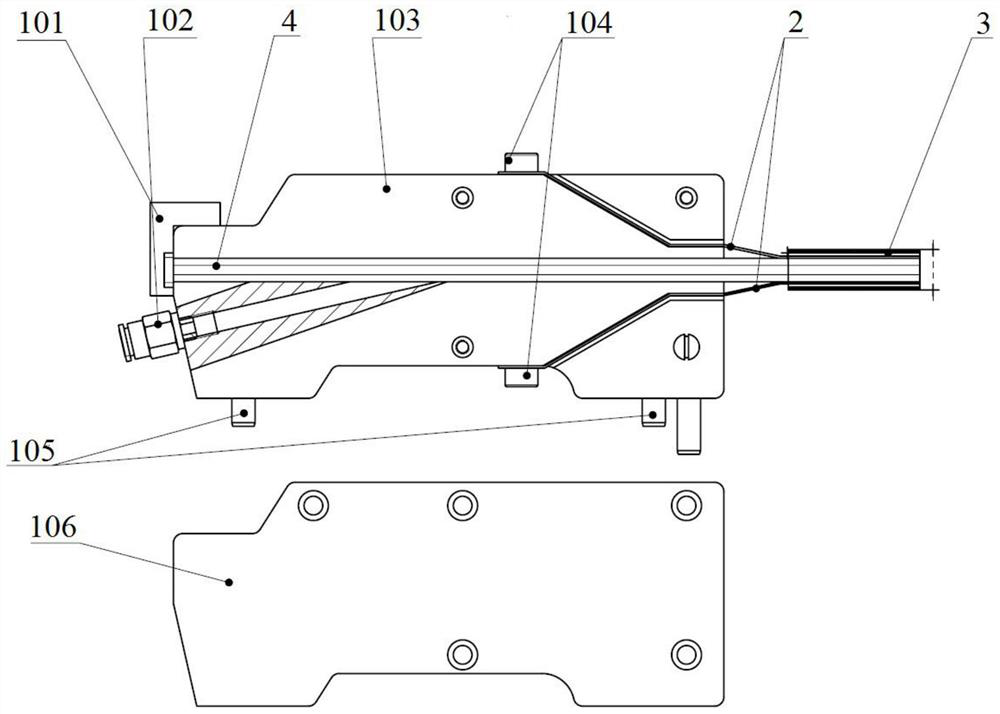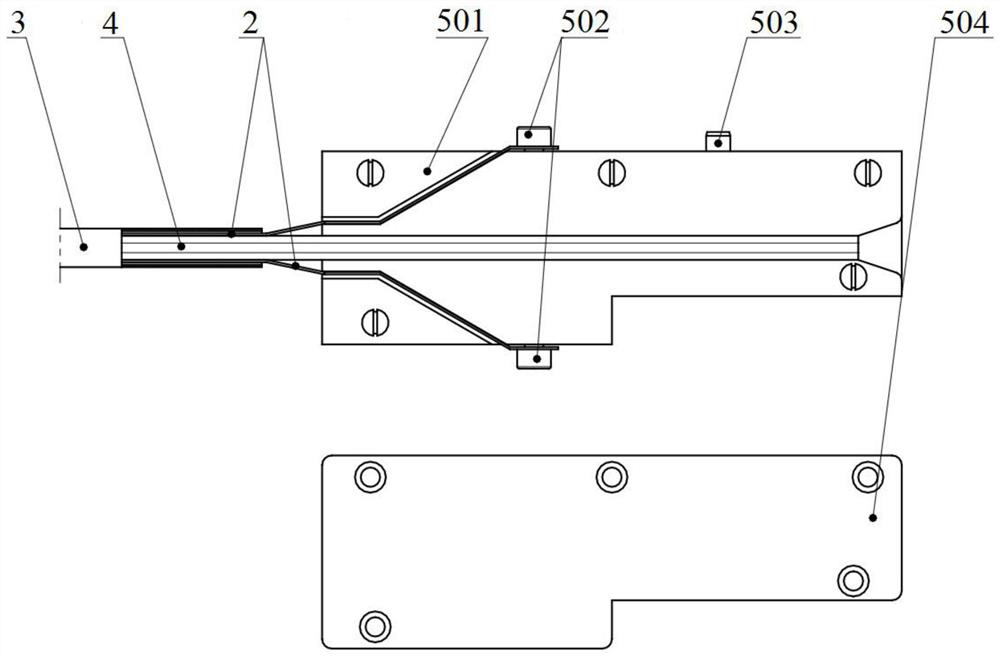Tow conveying device for composite material tow laying equipment
A technology for conveying devices and composite materials, which is applied in the directions of transportation and packaging, delivery of filamentous materials, and thin material processing, etc. It can solve problems such as the decline in the quality of the tow, poor use of the tow, and impact, and achieve the goal of reducing friction Effect
- Summary
- Abstract
- Description
- Claims
- Application Information
AI Technical Summary
Problems solved by technology
Method used
Image
Examples
Embodiment Construction
[0032] In order to make the purpose, technical solutions and advantages of the embodiments of the present invention more clear, the technical solutions in the embodiments of the present invention will be clearly and completely described below in conjunction with the accompanying drawings in the embodiments of the present invention. Obviously, the described embodiments It is a part of embodiments of the present invention, but not all embodiments. Based on the embodiments of the present invention, all other embodiments obtained by persons of ordinary skill in the art without making creative efforts belong to the protection scope of the present invention.
[0033] An embodiment of the present invention provides a tow conveying device for composite material tow laying equipment, such as Figure 1-5 As shown, the tow delivery device includes a tow inlet assembly 1 , a spring leaf 2 , a sheath 3 , a tow tube 4 and a tow outlet assembly 5 . The tow inlet assembly 1 and the tow outle...
PUM
 Login to View More
Login to View More Abstract
Description
Claims
Application Information
 Login to View More
Login to View More - Generate Ideas
- Intellectual Property
- Life Sciences
- Materials
- Tech Scout
- Unparalleled Data Quality
- Higher Quality Content
- 60% Fewer Hallucinations
Browse by: Latest US Patents, China's latest patents, Technical Efficacy Thesaurus, Application Domain, Technology Topic, Popular Technical Reports.
© 2025 PatSnap. All rights reserved.Legal|Privacy policy|Modern Slavery Act Transparency Statement|Sitemap|About US| Contact US: help@patsnap.com



